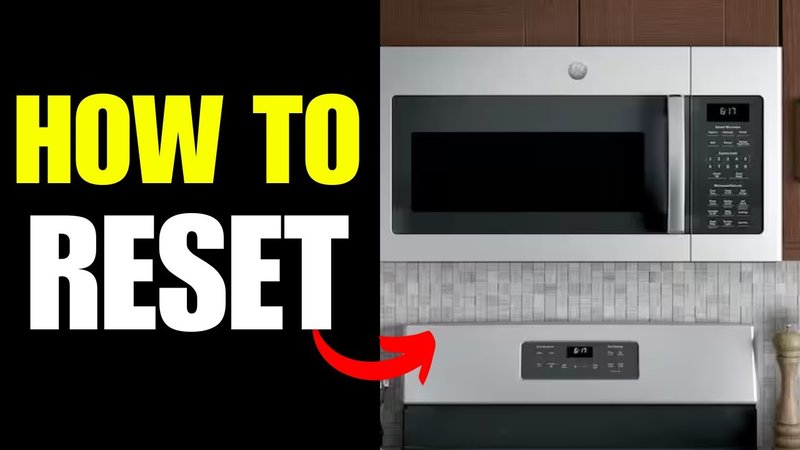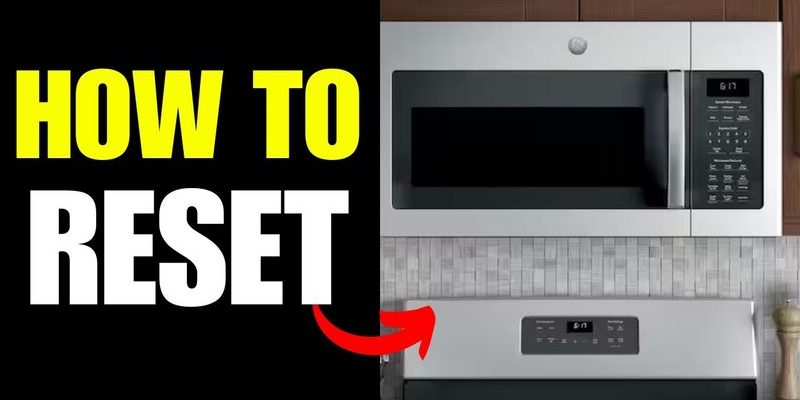
Error codes, like E1, are the microwave’s way of telling you something’s off-kilter. Think of them as your appliance’s version of a text message saying, “Hey, I need a little attention here!” These codes can pop up due to various reasons—maybe a power surge, or perhaps a miscommunication between the microwave’s smart parts. While it might seem intimidating, with a bit of guidance and a calming cup of tea, you’ll be ready to tackle the issue and get your trusty microwave back on track.
Understanding the E1 Code
Before diving into the reset process, it’s helpful to understand what this E1 code signifies. The E1 error code usually indicates a sensor-related problem. Consider sensors like the microwave’s detectives, keenly watching and sending signals to ensure everything runs smoothly. When one of these sensors misfires, it triggers a code like E1, signaling a need for attention.
Why does this happen? Well, various factors could be at play. Sometimes, it’s as simple as a temporary hiccup—similar to when your smartphone freezes out of the blue. Other times, it could arise from more persistent issues like electrical glitches, temperature sensor faults, or issues with the control panel. Whatever the cause, knowing how to reset the system is a valuable skill.
Understanding that this error code isn’t necessarily the “end of the road” is crucial. It’s more like a “yield” sign rather than a “stop” sign—proceed with caution, fix the issue, and then continue your journey. The reassuring part is that resetting your microwave can often give it the nudge it needs to get back to warming your food seamlessly.
Preparing to Reset Your Microwave
Now that you know what the E1 code is about, let’s gear up to reset your GE microwave. Before diving into any resets, unplugging your microwave is a practical first step. Like rebooting a computer, unplugging allows the microwave’s internal system to power down completely, helping clear any minor bugs or glitches the system is experiencing.
Ensure you unplug the microwave safely by firmly gripping the plug and pulling it from the outlet – never yank the cord! Think of this unplugging step as giving your microwave a moment to “catch its breath” and reset its thoughts. Leave it unplugged for at least five minutes. This short break can be enough to clear any temporary electrical issue that caused the E1 code.
After the five minutes have passed, plug the microwave back in. This basic power cycle often resolves the issue, allowing the microwave to reboot its sensor systems and return to its default settings. It’s like giving your microwave its morning coffee, waking it up, and readying it for another day of work.
Performing the Reset
With the microwave plugged back in, it’s time for the actual reset. If the E1 code persists, you might wonder what’s next—don’t fret! The next step involves manually resetting the device through the control panel. This might sound daunting, but fear not—it’s akin to recalibrating a watch.
First, locate the “Clear” or “Cancel” button on your microwave’s control panel. This button is like a reset button, waiting to revive your microwave’s settings. Press it firmly for about five seconds. This action prompts the microwave to clear any last lingering errors in its system and reset its memory. It’s like shaking an Etch A Sketch to start with a clean slate.
If the code still doesn’t clear, consult your user manual for specific guidance related to your microwave model. Each model can have slight variations, and the manual serves as the road map for troubleshooting. However, if the E1 code stubbornly persists despite your diligent efforts, professional repair service might be the next best step. Remember, reaching out for help doesn’t signify defeat but rather ensures your appliance receives the care it needs.
Tips to Prevent Future Errors
Having successfully navigated the reset, you might wonder how to avoid encountering this pesky error code again. It’s like setting rules to keep peace in the house. Regularly check and clean the vent areas of your microwave. Ensuring no blockages can prevent overheating and sensor miscommunications, keeping your microwave running smoothly.
Avoid using your microwave beyond its power rating, just like you wouldn’t overwork a car engine. When in doubt, take a peek at the user manual—it’s like turning to the microwave’s diary, revealing all its secrets and keeping you informed of its capabilities and limitations.
Lastly, ensure your microwave is connected to a power source compatible with its needs. Surges or improper voltage can lead to sensor errors. Using a surge protector or dedicated circuit could be a wise investment, acting as a protective knight against the forces of electrical mishaps.
In the end, while the E1 error code can be an unwelcome guest, understanding and addressing it can transform a troublesome moment into an opportunity for learning and empowerment. With these insights and steps, you’re well-equipped to keep your microwave buzzing and ready for your culinary adventures.
